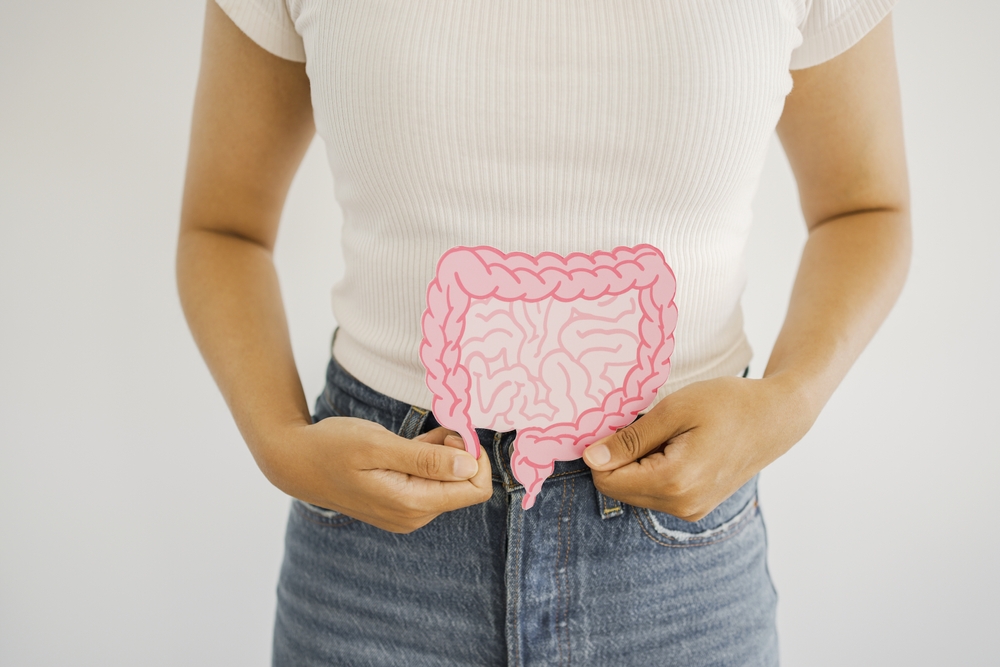What Really Happens to Your Body During a 72-Hour Fast, According to Doctors

Something radical happens inside your body when food stops arriving. Cells begin hunting for alternative fuel sources. Hormones shift dramatically. Ancient survival mechanisms activate that most people never experience in modern life. Scientists now understand these changes hour by hour.
Doctors studying extended fasting discovered processes that sound almost magical. Your body starts consuming itself, but not in ways you’d expect. Certain beneficial transformations only occur when stomach remains empty for extended periods. No medication or supplement can replicate what happens naturally during prolonged food absence.
What unfolds over 72 hours of zero food intake challenges everything most people believe about nourishment, healing, and survival. One physician claims this ancient practice could address America’s deadliest modern health crisis. But science reveals both remarkable benefits and serious dangers lurking within extended fasts.
Doctor Claims Fasting Could Fix America’s Biggest Health Crisis
Forty percent of US population now meets clinical criteria for obesity according to UCLA Health reports. Obesity-related cancer deaths tripled between 1999 and 2020, creating unprecedented public health emergency. American diet characterized by processed meat, sugary drinks, fried foods, and high-fat products ranks among world’s worst.
Dr. Eric Berg believes solution lies in ancient fasting practice rather than pharmaceutical interventions. He argues that eating frequency matters more than food quality for many chronic conditions. Modern eating patterns keep bodies in constant fed state, preventing beneficial processes from activating.
Berg states one problem drives all chronic disease including cancer: insulin resistance. Condition develops when cells stop responding properly to insulin signals due to constant elevated levels. Frequent eating throughout day maintains perpetually high insulin that blocks healing mechanisms.
“There’s one single problem behind all chronic disease, including cancer, and that is insulin resistance,” Berg explained, which develops from eating too frequently throughout day.
First 4-8 Hours: Body Stops Digesting Food

Digestive process comes to halt approximately four hours after last meal finishes processing through stomach and intestines. Blood sugar begins dropping around eight-hour mark as glucose from recent meals depletes from bloodstream. Body recognizes shift from fed to fasted state and begins searching for alternative energy sources.
Most people eating three meals daily with snacks never experience true fasted state. Constant food intake maintains elevated insulin and keeps body locked in storage mode rather than burning mode. Eight-hour mark represents first significant metabolic shift toward accessing stored energy reserves.
Transition period from fed to fasted state triggers hormonal changes throughout body. Insulin levels start declining while counter-regulatory hormones like glucagon increase. Body prepares to tap into glycogen reserves stored in liver and muscles during previous meals.
Hours 12-16: Liver Dumps Stored Sugar
Body becomes depleted of readily available glucose around 12-hour mark and turns to stored glycogen in liver. Liver breaks down glycogen into usable glucose molecules that enter bloodstream to maintain energy levels. Process resembles squeezing water from saturated sponge according to Berg.
Glycogen storage includes massive amounts of water retention. Each gram of glycogen binds approximately three to four grams of water in liver and muscle tissue. Release of glycogen dumps tremendous water weight that shows up dramatically on scales.
Berg explained: “It’s like a sponge with water. You’re holding a lot of fluid.” Rapid weight loss during early fasting primarily represents water rather than actual fat loss. People often lose several pounds in first day or two of extended fast.
Weight plateaus after initial water dump completes, which confuses people expecting continued rapid loss. Plateau doesn’t indicate fasting stopped working, just that water weight already released. Fat loss requires more time and occurs at slower, steadier pace than dramatic initial water loss.
Hours 16-24: Brain Switches From Glucose to Ketones
Dr. Alan Goldhamer explains that within first 24 hours, body predominantly shifts from burning glucose to burning byproducts of fat metabolism called ketones. Brain, liver, and muscles each transition at different rates depending on individual glycogen stores and metabolic flexibility.
“Within 16 hours/24 hours/48 hours in that transition, you’ll be going from burning almost exclusively glucose to burning byproducts of fact metabolism,” Goldhamer described the fuel source swap.
Ketone bodies and beta-hydroxybutyric acid (BHB) become primary energy sources when insufficient carbohydrates or sugars arrive from diet. BHB production increases as liver breaks down fat stores into usable fuel. Brain adapts to running on ketones rather than its preferred glucose.
Berg notes that ketones eventually make up 87 percent of body’s total fuel during extended fasting. Brain actually functions better on ketones than glucose according to some research. Higher ketone levels feeding neurons improve mental clarity and cognitive performance beyond normal fed state.
Hunger Hits Hard Then Mysteriously Disappears

Mid-afternoon hunger becomes intense and overwhelming for people skipping lunch after missing breakfast. Brain screams for refueling through powerful biological signals. Irritability and emotional instability emerge as blood sugar drops and ghrelin hormone surges.
Recent research into “hanger” phenomenon concluded that disrupted brain homeostasis provokes complicated emotional responses. Biology, personality traits, and environmental cues create perfect storm of irritability when food-deprived. Flagging energy levels and vocal stomach make first 24-36 hours extremely challenging.
But hunger mysteriously decreases dramatically by day two or three for most people. Ghrelin hormone that creates hunger sensation gradually declines over multiple days of fasting despite empty stomach. Stomach secretes more ghrelin when in non-stretched state, but production tapers off during extended fasts.
Abatement of hunger happens more often than not during prolonged food abstinence. Counter-intuitive phenomenon confuses people expecting increasing desperation for food as fast continues. Body adapts to fasted state and stops sending urgent hunger signals after initial period.
Day 2: Human Growth Hormone Skyrockets
Human growth hormone levels soar dramatically by second day of fasting according to Berg. Elevated HGH burns fat stores while potentially building or preserving muscle tissue. Hormone surge represents body’s attempt to preserve lean mass during periods of food scarcity.
Brain function improves noticeably from higher ketone levels circulating through bloodstream. Ketones provide superior fuel for neurons compared to glucose in several ways. Mental clarity often exceeds normal fed state as brain runs efficiently on alternative fuel source.
Berg emphasized benefits of HGH spike for both fat loss and muscle preservation. Growth hormone prevents muscle breakdown that might otherwise occur during extended calorie restriction. Fat burning accelerates while protein structures remain relatively protected from catabolism.
Improved brain performance during fasting may represent evolutionary adaptation. Ancestors needed sharp minds during food scarcity to successfully hunt or forage. Bodies preserve and even enhance cognitive function when nutrition becomes unavailable for extended periods.
Your Breath Starts Smelling Weird
Ketone bodies produced during fat metabolism get released through multiple pathways including exhalation. Breath becomes noticeably sweet and fruity smelling as acetone exits lungs. Phenomenon indicates successful transition into fat-burning ketosis.
Research confirms breath acetone serves as reliable indicator of fat burning mode. Chemical signature distinguishes true ketosis from merely low-carb eating. Friends and family often notice distinctive odor before faster recognizes own breath changes.
Smell proves unpleasant enough that people maintained at distance during fasting period. Mouth odor resembles nail polish remover or overripe fruit depending on individual metabolism. No amount of brushing or mouthwash eliminates ketone breath during active fat burning.
Price of having abs in single digits includes periodic halitosis that drives people away. Ripped fitness enthusiasts promoting fasting rarely discuss social costs of ketone breath. Metabolic state producing desired body composition simultaneously creates breath that melts faces nearby.
Day 3: Autophagy Starts Cleaning House

Body transforms cellular junk into useful new components through process called autophagy after approximately 48-72 hours without food. Damaged proteins, dysfunctional organelles, and other cellular debris get broken down and recycled. “Magical” process only activates when body lacks incoming nutrition.
Berg calls autophagy transformative because it cleans and renews cells from inside. Process accelerates dramatically when body reaches 72-hour mark without food. Autophagy begins around 16-18 hours of fasting but intensifies significantly during third day.
Cellular cleanup targets intracellular pathogens including various viruses according to Berg. Autophagy specifically attacks Epstein-Barr virus and herpes viruses that hide inside cells. No pharmaceutical medications effectively eliminate these persistent viral infections.
Berg argues prolonged fasting represents only method for clearing certain viral infections from body. Autophagy’s antiviral effects cannot occur when regular eating provides constant nutrition. Body prioritizes digestion and building over cleanup and repair when food keeps arriving.
Immune System Gets Free Stem Cell Therapy
Seventy-two hours without food triggers dramatic immune system stimulation and regeneration. Immune cells multiply and strengthen, protecting against cancer development and autoimmune conditions. Stem cell production increases substantially during extended fasting period.
Berg compares fasting-induced stem cell generation to expensive medical treatments costing $50,000 or more. Body produces therapeutic stem cells naturally when deprived of food for three full days. Free biological therapy happens automatically without medical intervention or pharmaceutical costs.
Immune system renewal during fasting helps explain why historically people instinctively stopped eating when seriously ill. Ancient healing traditions recognized fasting’s immune-boosting effects long before modern science confirmed mechanisms. Body redirects energy from digestion toward healing and immune function during food absence.
Protection against cancer and autoimmune disease represents one of fasting’s most significant potential benefits. Renewed immune cells better recognize and eliminate abnormal cells before they become problematic. Enhanced immune surveillance during and after fasting may reduce disease risk long-term.
Brain Gets Smarter During Starvation Mode

Ghrelin injections improved mice performance on learning and memory tests by 30 percent in Yale research. Another study found ghrelin added to mouse brain cells triggered genes controlling neurogenesis. Brain cells divided and multiplied in response to hunger hormone.
Body preserves two organs during starvation while shrinking others: brain and reproductive organs in males. Biological priority on mental clarity reflects survival necessity during food scarcity. Ancestors needed sharp thinking to escape starvation through successful hunting or foraging.
Cognitive enhancement during fasting may represent adaptation making humans better problem-solvers when hungry. Mental performance improves rather than declining during initial fasting period. Brain receives protected status and enhanced function during food deprivation.
Neurogenesis triggered by fasting creates new brain cells and neural connections. Production of brain-derived neurotrophic factor (BDNF) increases with higher BHB levels. BDNF protects brain from oxidative damage linked to Alzheimer’s disease and Parkinson’s disease.
Who Should Never Try Extended Fasting

Mayo Clinic warns intermittent fasting inappropriate for pregnant women whose developing babies require consistent nutrition. People with eating disorders risk triggering dangerous restriction patterns through fasting protocols. Anyone at high risk for bone loss and falls should avoid extended fasts.
Diabetes patients face serious complications from fasting due to blood sugar regulation challenges. Medications that lower blood sugar become dangerous when combined with food restriction. Medical supervision becomes essential for anyone with metabolic conditions attempting fasting.
Fasting can cause constipation, fatigue, dizziness, and menstrual cycle disruptions in otherwise healthy people. Side effects vary widely based on individual health status and metabolic flexibility. Long-term health effects of repeated extended fasting remain unclear despite short-term benefits.
Anyone considering prolonged fasting must consult healthcare professional before attempting. Individual medical history, current medications, and underlying conditions affect safety and appropriateness. What works safely for one person may prove dangerous for another with different health profile.
Starvation and therapeutic fasting represent entirely different phenomena. Healthy people can survive 30-40 days without food when adequately hydrated. But dehydration kills within days, making water intake crucial during any fast. Extended fasting requires careful planning, medical oversight, and realistic assessment of personal health status before beginning.
Loading...

